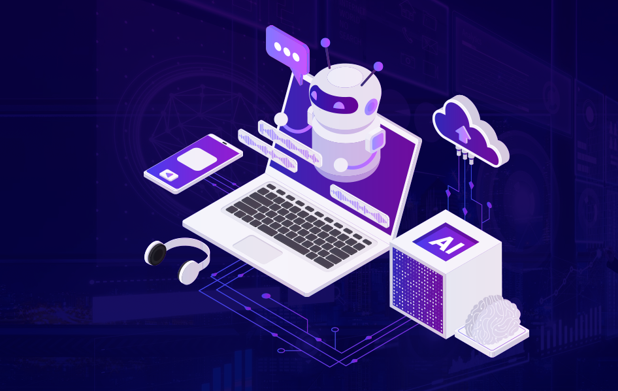The Growing Importance of AI Monitoring
As organizations scale their AI adoption, monitoring becomes a mission-critical step in ensuring accuracy, compliance, and performance. Deploying AI without proper oversight can lead to inefficiencies, errors, or even regulatory risks. That’s why enterprises are increasingly investing in AI monitoring tools to keep track of model performance, data pipelines, and decision-making transparency.
Among the emerging solutions, ZBrain offers a powerful monitoring system that helps businesses move beyond traditional analytics. Its AI-driven approach ensures that enterprise workflows remain reliable, secure, and measurable.
To get started, you can explore a detailed guide on how to implement AI monitoring effectively using the ZBrain Monitor.
What Is AI Monitoring?
AI monitoring refers to the continuous oversight of machine learning models, large language models (LLMs), and AI agents within enterprise systems. It involves tracking metrics such as accuracy, latency, data drift, user interactions, and compliance with internal or external guidelines.
Why It Matters
- Consistency: Ensures AI models behave predictably across different use cases.
- Transparency: Provides visibility into model outputs for audits and compliance.
- Efficiency: Identifies underperforming processes and optimizes resource allocation.
- Risk Reduction: Detects anomalies before they become business-critical problems.
ZBrain’s Approach to AI Monitoring
Unlike traditional dashboards that only track surface-level performance, ZBrain enables a deeper level of monitoring by integrating directly into enterprise workflows. Its platform allows organizations to:
- Track end-to-end agent activity across multiple applications.
- Set alerts when models deviate from expected outputs.
- Monitor compliance checks against defined business rules.
- Generate reports for governance and audits.
This makes it possible for enterprises to maintain confidence in AI-driven automation while scaling adoption across departments.
How to Use ZBrain Monitor Effectively
The ZBrain Monitor is designed to give organizations complete visibility into AI-powered processes. It is particularly useful for teams that want to balance automation with control.
Key Features of ZBrain Monitor
- Real-time tracking: Monitor performance of agents and LLMs in live environments.
- Custom thresholds: Define acceptable ranges for accuracy, latency, and compliance.
- Root cause analysis: Investigate failures or anomalies with contextual insights.
- User feedback loops: Incorporate human validation to refine AI outputs.
By using these capabilities, teams can ensure that AI systems not only deliver results but also align with enterprise standards.
Setting Up AI Monitoring with ZBrain
Monitoring is not just about dashboards—it’s about building a framework that grows with your AI strategy. ZBrain makes this possible with its Builder module, which allows teams to configure, manage, and scale monitoring capabilities.
For a detailed breakdown of how to configure monitoring features step by step, check out the ZBrain Builder Monitor.
Steps to Configure Monitoring
- Define key metrics to track (accuracy, compliance, response time).
- Set alerts for threshold breaches and unusual activity.
- Integrate workflows so that monitoring covers every AI interaction.
- Review reports for trend analysis and regulatory audits.
- Refine continuously based on human feedback and evolving business needs.
Best Practices for AI Monitoring
1. Align Monitoring with Business Objectives
AI monitoring should not exist in isolation. Define KPIs that directly tie back to business goals—whether that’s reducing errors in customer service automation, ensuring faster invoice reconciliation, or maintaining compliance in financial contracts.
2. Prioritize Explainability
As regulators increase scrutiny of AI models, explainability is becoming a non-negotiable feature. Monitoring systems should provide clear reasoning for model outputs, making it easier to pass audits and build user trust.
3. Use Human-in-the-Loop Feedback
AI systems improve when humans are part of the monitoring process. Feedback loops ensure that errors are corrected quickly, reducing the risk of systemic failures.
4. Automate Reporting
Manual oversight is resource-heavy. By automating reporting and alerts, organizations can ensure real-time visibility without burdening their teams.
The Future of AI Monitoring in Enterprises
AI monitoring will become more sophisticated as enterprises scale their adoption of LLMs and multi-agent systems. In the near future, we can expect:
- Predictive monitoring that identifies risks before they impact business.
- Cross-platform integration where monitoring spans multiple enterprise systems.
- Regulatory-ready features that help organizations meet global compliance standards.
- Self-healing systems where AI detects and corrects its own errors.
Conclusion
AI monitoring is no longer optional—it is a foundational requirement for enterprises looking to scale responsibly. By using tools like ZBrain Monitor and configuring them through the ZBrain Builder Monitor, organizations can achieve transparency, control, and efficiency across their AI-driven workflows.
With a structured monitoring strategy, enterprises can unlock the full potential of AI while ensuring accuracy, compliance, and long-term trust.

